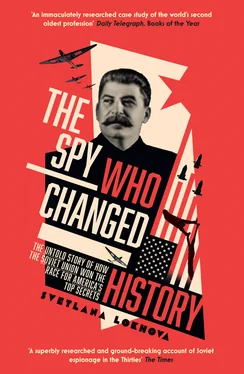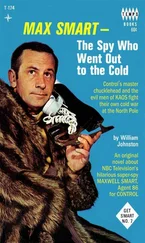1 ...7 8 9 11 12 13 ...21 The disparate village guerrilla groups combined in September 1918 to form the 2nd Worker-Peasant Stavropol Division. 47Despite the grand-sounding name, the Division could only stage raids at night due to an acute shortage of weapons and ammunition, their weakness concealed by the cover of darkness. Ipatov, a former gunsmith, built a mobile cartridge factory manufacturing 7,000 rounds per day. Even so, by the end of the month the guerrillas, cut off from any outside supplies, were almost out of ammunition. Often, the guerrillas went into battle with only three or four rounds each. Outnumbered and outgunned, under constant pressure from the advancing White Guard, the partisan units had to retreat into the interior of the province and then beyond. They were proud to record that even in this difficult period, the division was able to organise a massive transport of grain to Stalin, besieged in the nearby city of Tsaritsyn. In return, Stalin, commanding the desperate defence of the city that would later bear his name – Stalingrad – gave the partisans much-needed weapons and ammunition. 48
In late November 1918, the band suffered its first defeat and serious casualties in a failed attack on a White base. They lost hundreds of men. Exhausted by four months of continual fighting and retreats, the survivors were forced further and further to the north-east, away from their homes and support. From December 1918, the partisans started fighting against a new and formidable enemy, the well-armed Cossacks. Their new opponent was highly mobile and well versed in guerrilla war techniques. It was bitter, unrelenting winter warfare, pushing Shumovsky’s hungry unit onto the desolate Kalmyk steppe, a region known by Russians as ‘the end of the world’. In the freezing winter conditions, Shumovsky’s fighters suffered extreme hardship. For the hungry, poorly clothed and exhausted men, barely surviving on the bleak steppe, the final straw was a typhus epidemic. The disease was soon rampant not only in the army but in the rare settlements. By February, the steppe front was one large typhoid camp. It became necessary for the healthy to abandon the thousands of sick men, leaving them without protection from the advancing enemy. In early March, the 10th Red Army absorbed the remains of the partisans, and the survivors became the 32nd Infantry Division. 49Now a member of the Red Army, Shumovsky swore the solemn oath he would keep for his whole life, that ‘I, a son of the working people, citizen of the Soviet Republic, Stanislav Shumovsky swear to spare no effort nor my very life in the battle for the Russian Soviet Republic.’
The Red Army was an army in name only. After a succession of defeats, it was on the point of collapse when Shumovsky joined. Only a quarter of the former Russian Empire remained under Communist control and the Reds were in full undisciplined retreat. The leadership had eschewed the services of professional military officers and logistics, a sure recipe for disaster. Their defeats were down to cowardice, treachery and panic. Even the senior commanders ran away at the sound of the first shot. It was not the use of superior tactics but a lack of ammunition that, often as not, determined the outcome of battles. In the circumstances, promotion through the ranks was rapid for a dedicated young Communist such as Shumovsky. He was made first a squad leader then a machine-gun commander, and eventually a commissar. In the Civil War, fanatical teenagers, skinny boys in oversized uniforms, were regularly given command of large units made up of unreliable conscripts and recaptured deserters. The daily struggle for food took priority over military duties as the army lived off the land. Uniforms, including boots, were unavailable. The army provided its troops with no basic training, nor did it even teach its leaders rudimentary military tactics. With their inability to confront the Whites in a set-piece battle, the Red Army’s military strategy depended on encouraging the feverish formation of local militia units to stand against Denikin’s advancing volunteer army and supporting guerrilla attacks on the Whites’ weak civil administration. In practice, none of the individual Red guerrilla units were sufficiently organised to be effective. However, there were so many groups that they became a veritable plague on the Whites.
After their run of bitter defeats, the Red Army finally introduced military discipline. The Soviet government established a Revolutionary Military Council of the Republic with a single commander-in-chief for all fronts. Unity of command would save the Red Army in the large-scale battles of 1919. The army developed the ability to transfer troops between fronts at times of pressing need. The establishment of an overall operational command and an insistence on the strict execution of combat orders led to an improvement in fighting ability over the lacklustre performance of the independent amateur partisan units. The reintroduction of the basic principles of a regular professional army – namely complete submission to orders, a strict hierarchy and rigid discipline – helped strengthen the combat capability of the Red Army to first confront, then overpower the Whites. The Red Army officers were now appointed according to military ability, not elected by the popular acclaim of their troops. Orders and plans were no longer put forward to the troops for debate. In extremis, Leon Trotsky introduced the infamous ‘blocking troops’. He ordered the positioning of machine-gunners behind Red Army attacks to shoot waverers, deserters and shirkers.
The most important reform, however, was the introduction of a system of dual command. Professional military officers were paired with committed commissars, such as Shumovsky, to jointly command units. Commissars monitored not only the activities of military experts, but carried out the Communist Party’s policy in the armed forces to ‘provide class rallying, enlighten and educate personnel in the spirit of Communism’. This was a euphemism for removing the criminal elements in uniform that preyed on the civilian population.
The large-scale battles of 1919, stretched over southern and central Russia, involved hundreds of thousands of combatants on each side, and would determine the outcome of the Civil War. In the south of Russia, the Red Army faced its largest and most determined opponent, the well-equipped army of the fierce General Denikin. He was heavily supported both financially and militarily by the British and the Americans, while the Western powers turned a blind eye to the mounting evidence of an unpalatable genocide – known as the ‘White Terror’ – behind Denikin’s front lines. There were large-scale massacres of suspected Communists and Jews, who were often seen as one and the same, in the territory that fell under Denikin’s control. In their vast summer offensive, the Whites were able to deploy tanks, armoured cars and significant quantities of artillery, and advanced with the support of mercenary British pilots who bombed the retreating Reds. Denikin’s goal was to deliver a coordinated knockout blow on Moscow. He believed its capture would ensure the complete destruction of Communism.
Denikin’s army came close to achieving its goal, driving the enthusiastic but largely inept Red opponents before them. However, his army overran its supply lines and, lacking reserves, allowed the hard-pressed Red Army to bring up reinforcements first to halt the advance and then launch a large-scale counter-attack. In the midst of the renewed savage fighting in November 1919 for the critical Stavropol region, Shumovsky was wounded in the head by shrapnel near Kamyshin. 50
By the end of the seesaw campaigning season of 1919, it was clear that the Communists would not only survive but were in the ascendancy. Winston Churchill, Britain’s Minister of War and the architect of foreign intervention, was forced to bow to his public’s war-weariness and pull his troops out of Russia, having failed to strangle Communism in the cradle as he had pledged. 51Without British finance, arms, advisors and strong diplomatic hands to guide them, the White opposition movement squabbled among themselves and teetered on the brink of complete collapse. Their armies retreated on all fronts, a mere shadow of their former military power. By January 1920 the reformed Red Army had advanced to knock on the door of the Caucasus. Shumovsky was wounded for a second time, this time in the leg, during the rapid advance on the strategic town of Rostov-on-Don. 52The defeated White General Denikin lost half his army in a disastrous retreat to Novorossiysk and was replaced as overall White commander by the more capable General Baron Wrangel, who is immortalised in the popular marching song of the Red Army:
Читать дальше












